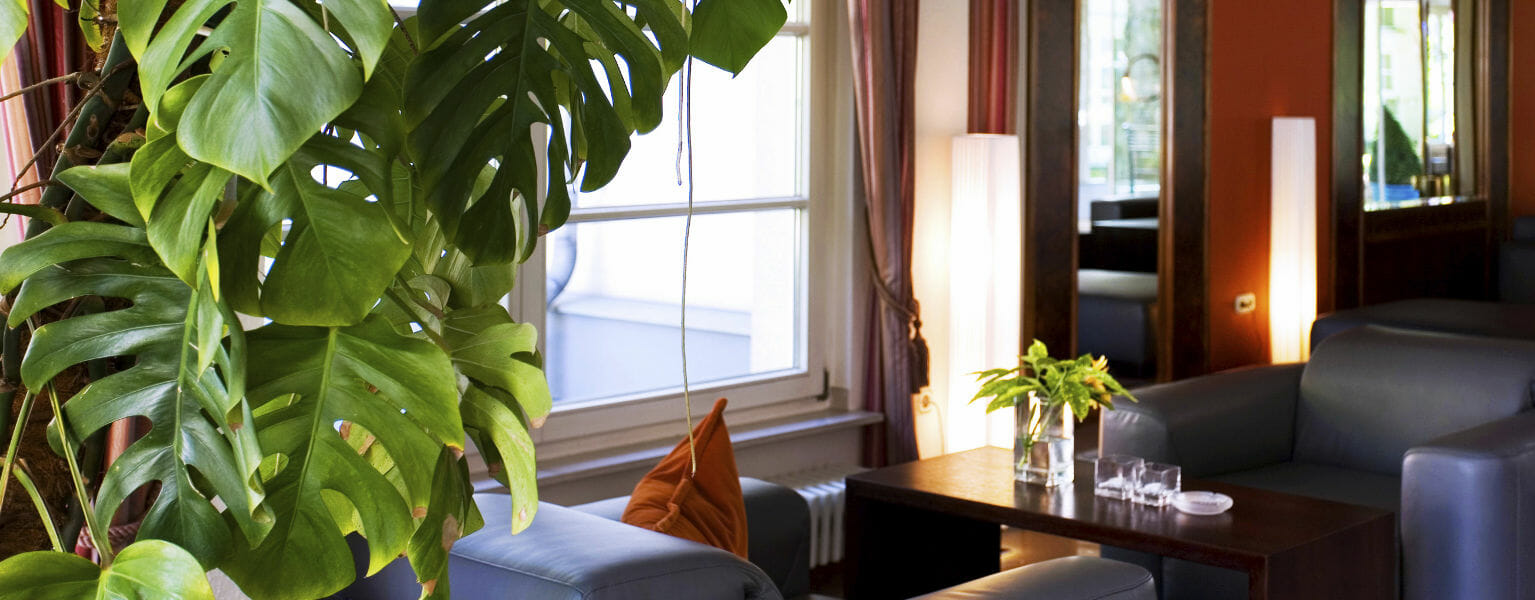Most articles about making property improvements focus on the big ticket items — new laundry rooms, roof decks, pools, and so on. But too often a less expensive option is overlooked: the humble houseplant.
Research suggests that indoor plants improve air quality, filter out toxins, and even reduce sickness. They’re attractive and make a space more pleasant, and home stagers routinely recommend decorating your house with plants to help sell it faster. Best of all, a study in the Journal of Environmental Psychology says plants make you smarter.
So why wouldn’t you want plants on your property?
 “When you walk into a room that has plants, you can feel the difference,” says Becky Sundberg, president and owner of Foliage Design Systems in Minneapolis. “When commercial buildings are up for sale, the seller will often bring in plants to help get it sold, because they make the environment feel and look nice.”
“When you walk into a room that has plants, you can feel the difference,” says Becky Sundberg, president and owner of Foliage Design Systems in Minneapolis. “When commercial buildings are up for sale, the seller will often bring in plants to help get it sold, because they make the environment feel and look nice.”
We asked Sundberg about how to choose the best indoor plants for a property and its common areas.
What are some good choices for indoor plants that balance attractiveness with low maintenance and heartiness?
When choosing your plants, the number one factor is lighting. So you have to think about what kind of lighting there is: Is there a window close by? Is it entirely artificial light?
For low-light situations, Aglaonemas are a good choice, and so are zarnioculcas zamifolia (usually referred to as ZZ plants). Sanseviaria are another solid option.
For really low-light situations, Lisa cane is beautiful. It’s pricy, but it really dresses up a location.
If you’ve got a lot of light, philodendrons will work, and so will croton or ficus.
Are there plants that work better in southern parts of the country?
As long as they’re indoor, those plants do fine anywhere in the country.
Are there any plants to avoid?
Mostly that’s specific to the lighting situation. Some plants, like philodendrons and the other high-light plants, won’t survive in dark areas, so I avoid them in those situations.
But there are some plants I wouldn’t use at all. Ivy is a plant I rarely use, because they are going to develop spider mites. It’s not if but when. If you’re only checking on the property once a week, an infestation of spider mites might have killed the plant by the time you catch it.
What are the basics of plant care?
Well, obviously watering, getting the right light level, dusting them, and turning them if they’re near a window so they grow evenly. On occasion you may have to deal with pests. Certain plants get particular infestations, like ivy and spider mites, but other pests, like fungus gnats, don’t care — they’ll show up in any plant.
How do people end up killing their plants?
A lot of people don’t think about lighting, so they buy a plant that’s wrong for their light situation and it doesn’t survive. But the biggest mistake I see is overwatering. When you buy a plant at Home Depot or somewhere like that, a lot of times they just have the easy care plant tag, and it doesn’t give you instructions for that variety of plant. It’s sensible to keep the plant tag and do an Internet search on the name when you get home.
You can find specific instructions about the right amount to water, and you can also find out the signs of common pest infestations and other information.
What plants have you placed around your common areas with success? We’d love to know, so leave a comment below.
Read more on Maintenance & Improvements
